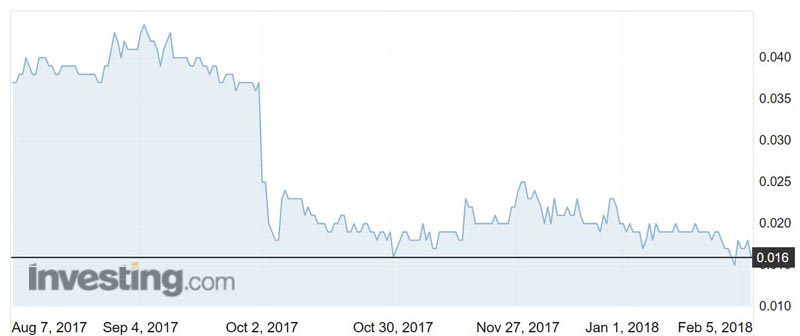WPG shares double on ‘spectacular’ gold results after short-term pain
Mining
Mining
Things are looking up for iron ore-turned-gold explorer WPG Resources, with grades and tonnages set to increase at its Challenger operation in South Australia.
The shares opened up 100 per cent ahead, jumping from 1.6c to 3.2c in early Wednesday trade after announcing “a number of spectacular gold intersections”.
The shares traded as high as 3.9c but settled at 3c — up 87 per cent for the day.
WPG (ASX:WPG) signalled in early January that a change in strategy at the operation would see reduced production in the short-term.
However, chief Wayne Rossiter stressed at the time it would only be “short-term pain”.
WPG has now drilled out intersections in the Perseverance pit that have returned grades as high as 607.75 grams per tonne (g/t) of gold.
Anything above 5 g/t is considered high-grade.
The grades are better than what WPG was hoping for.
“It’s quite complex where the mineralisation is and this grade control drilling is probably in some areas twice as good as we expected, but what will actually be translated into grade going through the mill we’ve got to wait and see,” CEO Wayne Rossiter told Stockhead.
The company is working to finalise an optimisation study this month to de-emphasise short-term production from high-cost remnant-mining in the older parts of the mine and focus more on developing the virgin Challenger Deeps area.
The recent grade control drilling has provided definition of the 120-90mRL horizon, one of the stopes (step-like level), which will be mined from February through to June.

WPG told investors this will form the basis for sustained increase in both tonnages and grade of Tarcoola ore to be processed over the coming months.
“I’m expecting around 17,000 ounces this quarter and probably closer to 23,000 ounces next quarter and the ounce contribution from Tarcoola will be quite significant over the next six months,” Mr Rossiter said.
The company expects to produce about 60,000 ounces in the 2018 financial year, down from the original forecast of 70,000 to 80,000 ounces.